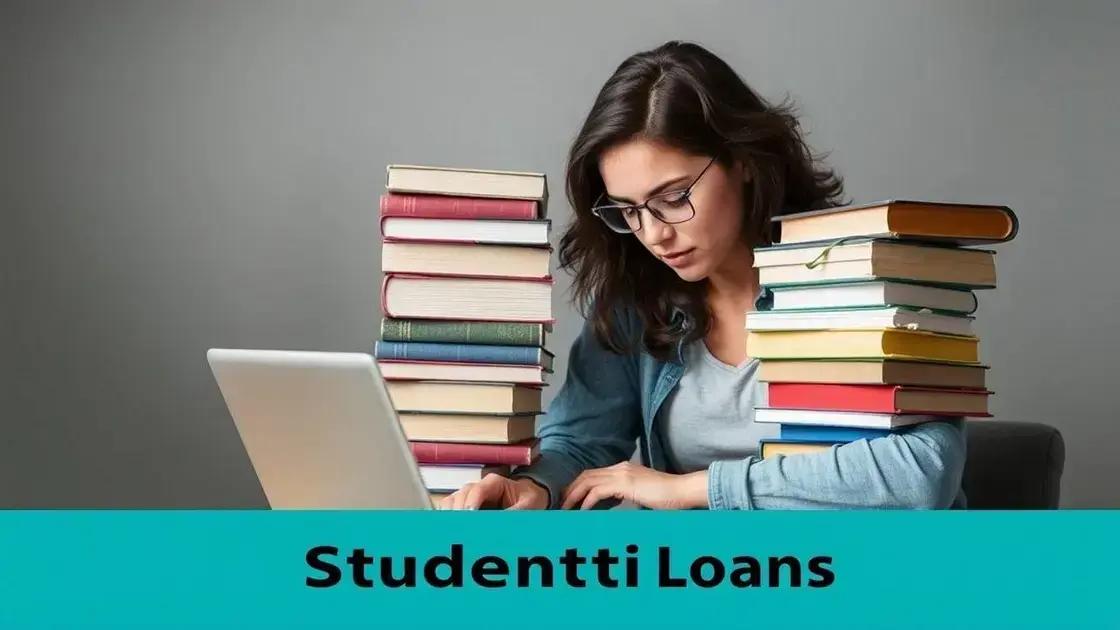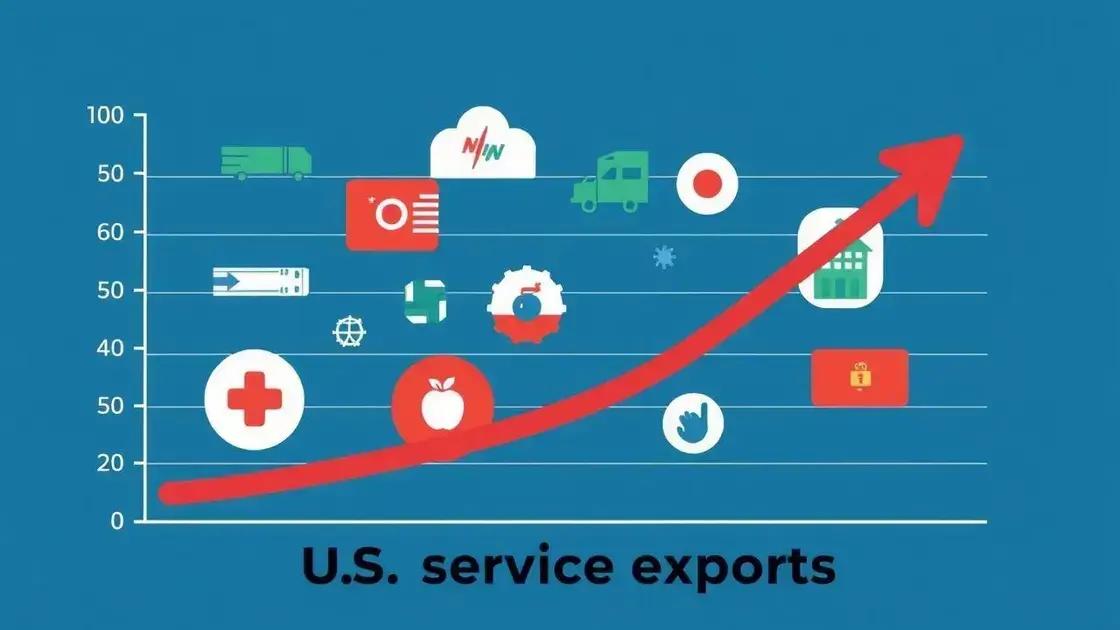Student loan forgiveness: what you need to know

Student loan forgiveness involves the cancellation of federal student loan debt for qualified borrowers, particularly those in public service or teaching roles, thus easing their financial burdens.
Student loan forgiveness is transforming the way many graduates view their financial futures. Have you ever wondered how this could lighten your debt burden? Let’s dive into the details.
Understanding student loan forgiveness programs
Understanding student loan forgiveness programs is essential for borrowers aiming to lessen their financial burdens. These programs can offer substantial relief, but knowing how they operate is crucial.
Types of Student Loan Forgiveness Programs
Various programs exist, targeting different groups of borrowers. These are often tailored to public service workers, teachers, or those in certain professions.
- Public Service Loan Forgiveness (PSLF): This program is for individuals working in government or non-profit roles.
- Teacher Loan Forgiveness: Designed for educators, it rewards those who serve in low-income schools or subjects.
- Income-Driven Repayment (IDR) Forgiveness: After making payments for a specific period, any remaining balance may be forgiven.
Each program has unique eligibility criteria and requirements, making it essential to review them carefully. For instance, the PSLF requires 120 qualifying payments while employed by an eligible employer. Many borrowers find themselves confused about these stipulations.
Eligibility Criteria
Eligibility is often determined by your job, repayment plan, and whether your loans qualify. It’s vital to ensure your loans are federal loans, as most forgiveness options don’t apply to private loans.
Furthermore, borrowers must stay updated on the documentation required for each program. Missing paperwork can delay, or even negate, your chances of receiving forgiveness. To facilitate this, keep your employment records handy and regularly check in with your loan servicer.
Additionally, changes in federal policies can impact the availability of these programs. Therefore, regularly reviewing your student loan forgiveness options ensures that you remain informed of any developments or changes that could affect your repayment plans.
In conclusion, understanding these programs broadens your financial options and equips you to make informed decisions. By actively engaging with your loans and pursuing forgiveness opportunities, you can potentially relieve your financial stress.
Eligibility criteria for forgiveness
When considering eligibility criteria for forgiveness, it’s important to understand that not everyone qualifies for these programs. Each program has specific requirements that you must meet to benefit from loan forgiveness.
General Requirements
Generally, your loans must be federal loans, as private loans are not eligible for forgiveness. This key point is crucial for anyone looking to reduce their debt. Many borrowers overlook this aspect, which can lead to confusion later on.
- Loan Type: Ensure that you have federal student loans, as programs like Public Service Loan Forgiveness (PSLF) only apply to them.
- Employment Status: Many forgiveness programs require you to work in certain fields, such as public service or education.
- Payment History: You need to have made a specific number of payments to qualify, often while enrolled in a qualifying repayment plan.
Additionally, specific programs may have unique requirements. For instance, to qualify for the Public Service Loan Forgiveness, you must be employed by a qualified employer, such as a government or not-for-profit organization.
Documentation and Verification
You must also keep detailed records to prove your eligibility. Maintaining accurate employment records and payment history can make or break your chances of receiving forgiveness. If you fail to provide necessary documentation, it may delay or deny your forgiveness application.
Many borrowers find themselves unsure of their status. It’s a good practice to contact your loan servicer regularly to ensure you understand your eligibility criteria, complete all required forms, and update your information as needed.
In keeping informed about your options, you maximize your chances of achieving student loan forgiveness. Understanding the specific criteria is the first step toward potentially relieving your financial burdens.
Steps to apply for student loan forgiveness

Applying for student loan forgiveness can seem overwhelming, but breaking it down into steps can simplify the process. Knowing where to start is crucial for effective application.
Step 1: Identify Your Loan Type
First, determine if your loans are federal or private. Only federal loans are eligible for most forgiveness programs. If you have private loans, consider contacting your lender to explore alternative options.
Step 2: Research Available Programs
Next, research various forgiveness programs to find the one that best suits your situation. Familiarize yourself with the specific criteria for programs such as:
- Public Service Loan Forgiveness (PSLF) for employees in government or non-profit jobs.
- Teacher Loan Forgiveness for educators working in low-income schools.
- Income-Driven Repayment Forgiveness which forgives remaining loans after a lengthy repayment period.
Each program has its own set of criteria, so make sure to read through them carefully. It’s also helpful to check if you qualify for any temporary relief options that may be available.
Step 3: Gather Necessary Documentation
Gather all the required documents related to your loans, employment, and income. Keeping this information organized will make the application process smoother. Documents typically include:
- Your loan statement detailing the type and amount of loans.
- Proof of employment, especially if applying for PSLF.
- Your tax returns to verify your income.
An organized file will speed up the application and reduce the chance of mistakes. Once you have everything prepared, follow the application instructions specific to the program you are applying for.
Step 4: Submit Your Application
After completing the application, submit it according to the program’s guidelines. Follow the submission instructions closely and ensure you provide any additional required information. Some programs may even allow electronic submissions, which can be quicker.
Be patient after submission. The review process can take several months. During this time, it’s advisable to keep records of your application and any correspondence with your loan servicer. Staying proactive will help ensure a smooth experience.
Common misconceptions about student loans
Common misconceptions about student loans can lead to poor financial decisions for borrowers. Understanding these myths is essential for managing your debt effectively.
Myth 1: All student loans are the same
Many people believe that all student loans function identically. In reality, there are both federal and private loans, each with different terms, interest rates, and eligibility criteria. Federal loans usually offer lower interest rates and more flexible repayment options compared to private loans.
Myth 2: You can’t get help with repayment
Another common belief is that there is no help available for loan repayment. However, various programs, such as income-driven repayment plans and forgiveness options, are designed to assist borrowers based on their financial situations. Researching these options can provide significant relief.
Myth 3: Student loans don’t affect your credit score
Many borrowers think that student loans will not impact their credit score. This is incorrect. Late payments or defaults can harm your credit score, making it crucial to manage your loans responsibly and maintain consistent payments.
Understanding these common myths helps borrowers make informed decisions about their student loans. By being aware of the differences between loan types, the assistance available, and the impact of loans on credit scores, you can navigate the student loan landscape more effectively.
Additionally, avoiding misinformation starts with asking questions. Speak with a financial advisor or use resources from your loan servicer to clarify any uncertainties you might have.
Impact of student loan forgiveness on credit scores
The impact of student loan forgiveness on credit scores is a significant concern for many borrowers. Understanding how forgiveness works can help you manage your finances better.
How Loan Forgiveness Affects Your Credit
When your loans are forgiven, it means that your debt is wiped away. This can initially seem detrimental because it may reflect a significant change in your total debt load. However, a forgiven loan can positively impact your credit score by reducing your overall debt-to-income ratio.
Positive Effects
Here are a few positive effects that may occur:
- Lower Debt Levels: Having less debt can lead to a higher credit score since lenders prefer lower debt levels.
- Improved Credit Utilization: A lower utilization rate can portray you as a more reliable borrower.
- Better Payment History: If past late payments are alleviated due to forgiveness, your payment history can improve.
Potential Drawbacks
Despite the benefits, some borrowers worry about possible drawbacks:
- Temporary Score Drop: In some cases, there might be a temporary drop in your score right after forgiveness, depending on your overall credit profile.
- Impact on Future Borrowing: Lenders may view the nature of debt forgiveness unfavorably if other financial circumstances are not strong.
It’s crucial to keep in mind that every borrower’s situation is different. Monitoring your credit score after loan forgiveness can help you gauge the impact accurately. By checking your credit report regularly, you can spot any changes and address them accordingly.
Overall, the net effect of student loan forgiveness typically depends on your financial situation and how you manage your remaining debts. Utilizing available financial tools and resources can help you understand your credit score dynamics.
In summary, understanding the nuances of student loan forgiveness can empower you to make informed financial decisions. It’s essential to know the eligibility criteria, application process, and the potential impact on your credit score. By recognizing common misconceptions, you can avoid pitfalls and utilize available resources to navigate your journey toward financial freedom. Stay proactive in managing your loans and explore available programs to ease your financial burden effectively.
FAQ – Frequently Asked Questions about Student Loan Forgiveness
What is student loan forgiveness?
Student loan forgiveness refers to the cancellation of some or all of your federal student loan debt, depending on certain eligibility criteria.
Who qualifies for student loan forgiveness?
Eligibility typically includes federal loan borrowers who work in specific sectors, such as public service or teaching, and meet certain repayment and employment conditions.
How do I apply for student loan forgiveness?
To apply, determine which forgiveness program suits you, gather necessary documentation, and submit your application to the appropriate loan servicer.
Will loan forgiveness affect my credit score?
Loan forgiveness can positively impact your credit score by lowering your debt levels, but it may also cause a temporary decrease depending on your overall credit profile.






